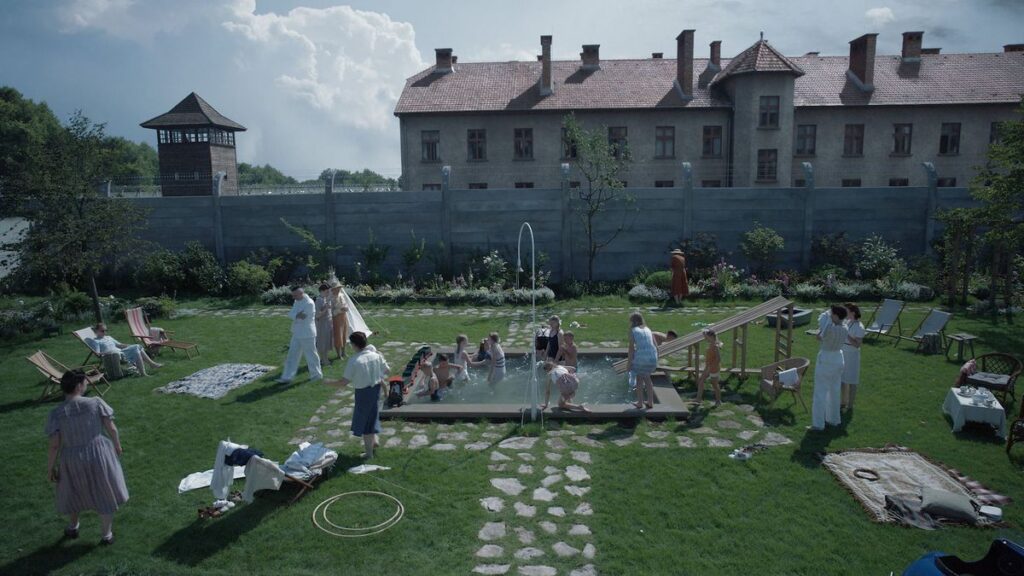The Zone of Interest is one of the most harrowing and memorable movies released in the last year. It presents a unique perspective on the Holocaust, telling one story with its visuals while revealing a larger and more horrifying truth with its audio mix. The experience is awe-inspiring in a movie theater: The film is up for Best Picture and Best Director at the 96th Academy Awards, and it also earned a Best Sound nomination for sound designer Johnnie Burn and sound mixer Tarn Willers. It’s easy to wonder, though, whether the home release could possibly communicate its message with the same power, given how much the movie depends on sound mixing, which varies from home theater to home theater. Burn already has a plan for that.
In an interview with Polygon, Burn explained that The Zone of Interest uses two completely separate and technically unrelated soundscapes. The first accompanies the on-screen story of the Höss family, as its patriarch, Rudolf, fulfills his role as the commandant of Auschwitz in 1943 Germany. This track has the characters’ dialogue, the score, and the sound effects of each scene; it’s what you would expect the movie to sound like, based on what you’re watching.
The second track, however, has the sounds of Auschwitz. It’s filled with blaring sirens, frequent gunshots, the bellow of chimneys churning out smoke, and the screams of prisoners being abused and executed. It’s absolutely horrifying — and according to Burn, the entire soundscape was carefully designed to ensure that it never impacted the characters in the rest of the movie. No matter what awful sounds are happening in the background, Burn made sure they never seemed in service to the Höss family’s emotions or storyline. Gunshots don’t underline statements from the family; they just happen and are ignored, like they’re from a different reality, even though they’re happening only a few hundred yards away.
Image: A24
The one place where the line between the two soundtracks becomes permeable, according to Burn, is in the ambiguity of certain sounds. He explained that he and director Jonathan Glazer would sometimes choose cries from prisoners that sounded like trains, or shouts aimed at making viewers uncertain about whether they’re listening to one of the Höss children playing or something far more horrific in the camp.
“The more you blur that line, the more you’re thinking, Well, [the audience] can close their eyes, but they can’t close their ears,” Burn said.
But while all that detail is easy to see in a theater, Burn took steps to make sure it came through for home viewers as well. And some of his planning starts with decisions he made for the theatrical mix, too.
“One thing that plays in its favor is we did a very detailed Dolby Atmos mix, with all sorts of sounds around us,” he explained. “It was very accurate and pinpoint to, you know, trains behind us and planes overhead and everything. But we ended up withdrawing the bandwidth on that and narrowing everything, because we felt that sensationalized it. The majority of the film sound actually exists alongside the dialogue, not in the auditorium, but on the front wall of the screen, because it just felt more documentary and less glossy.”
Drawing back on the scope of the sounds and centralizing them to a theater’s front speakers matches up great with the home environment, Burn said — most people watching the movie at home will be using TV speakers or sound bars. That’s not the only design work he did for the separate eventual home version of the movie.

Image: A24
“For the home entertainment versions, I did do a slightly separate mix, with the background sounds ever so slightly louder,” he said. “In a cinema, it’s very quiet, and the cinema speakers can play something very loud. So you have that enormous range, whereas in anyone’s home, there’s a washing machine on, and the speakers can only go that loud. […] So you have less to play with in terms of your lowest point or your loudest point.”
According to Burn, this should allow viewers to have an at-home experience as powerful as what theatergoers get, hearing the horrors of Auschwitz behind the mundane cruelty of the Höss family. And in some ways, he thinks that the home version offers its own vision of the film.
“I think one of the real powers of the film is that you really aren’t sure what you’re hearing some of the time,” Burn said. “Not hearing the odd thing is probably not the end of the world. I’d way rather that than to have overdone it, you know, because it’s almost like the quieter this film is, the more it works.”
The Zone of Interest is in theaters now, and has been expanding throughout its run. It will open in a new wave of theaters for its widest release on Feb. 2.

